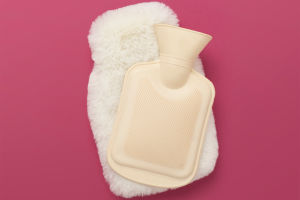To determine the quality of a mask, you can analyze its ingredient list for clues.
The ingredient list is usually arranged in order of highest to lowest concentration, so by reading the ingredient list, we can gain an initial understanding of the effective ingredients in the mask and those that may cause skin discomfort.
First, we need to pay attention to the moisturizing ingredients. Good masks typically contain hyaluronic acid, glycerin, and other moisturizers. These ingredients help the skin retain moisture, keeping it soft and smooth.
If moisturizing ingredients are listed at the top of the ingredient list, it indicates that the mask is likely to have good moisturizing properties. Conversely, if these ingredients are absent or present in very low amounts, the moisturizing effect of the mask may be weak.
Next, quality masks often include antioxidant ingredients. Antioxidants help combat the damage caused by free radicals, delaying skin aging. Common antioxidant ingredients include vitamin C, vitamin E, and green tea extract.
If these ingredients are positioned prominently in the ingredient list, it suggests that the mask may have antioxidant benefits, making it suitable for combating early signs of aging or repairing sun damage.
Additionally, many high-quality masks contain soothing ingredients. For those with sensitive skin, soothing ingredients are particularly important.
Ingredients like aloe vera extract, chamomile extract, and centella asiatica extract are common soothing components that can reduce skin irritation and redness. If a mask contains these ingredients, especially those targeting sensitive skin, its gentleness is likely to be enhanced.
We should also note the concentration of active ingredients in the ingredient list. Typically, if a mask claims to have specific effects such as brightening or anti-aging, its ingredient list should include corresponding active components like niacinamide or arbutin.
However, if these ingredients rank too low, their efficacy may be difficult to achieve as the higher the concentration of active ingredients, the better the effect is likely to be.
However, some masks may contain irritating ingredients, which warrant extra caution. Common irritating ingredients include ethanol and certain fragrance components. Ethanol is often found in oil-control masks, but for dry or sensitive skin, it can cause irritation and dryness.
Fragrance ingredients, while enhancing the product's scent, may also trigger allergic reactions. If you see ethanol or fragrance prominently listed, especially ethanol, it is advisable to perform a patch test before full use.
Moreover, pay attention to the type of preservatives used. While preservatives help prolong the shelf life of masks, some may irritate the skin.
For instance, phenoxyethanol is a common preservative, but if it ranks too high on the ingredient list, it can also provoke sensitivity. In contrast, milder preservatives like ethylhexylglycerin tend to have less irritating effects on the skin.
Finally, it is advisable to avoid masks that contain silicone-based ingredients, especially for skincare that require breathability.
Silicone ingredients like dimethicone can provide a smooth feel but may also form a thin layer on the skin's surface, hindering normal respiration and absorption. For oily skin, this can exacerbate oiliness.
By carefully reading the ingredient list, we can roughly assess the quality of a mask. Quality masks typically prioritize natural moisturizing, antioxidant, and soothing ingredients while avoiding high concentrations of irritating components.
When choosing a mask, consider your skin type and combine the characteristics of the ingredients to find the product that best suits you.


